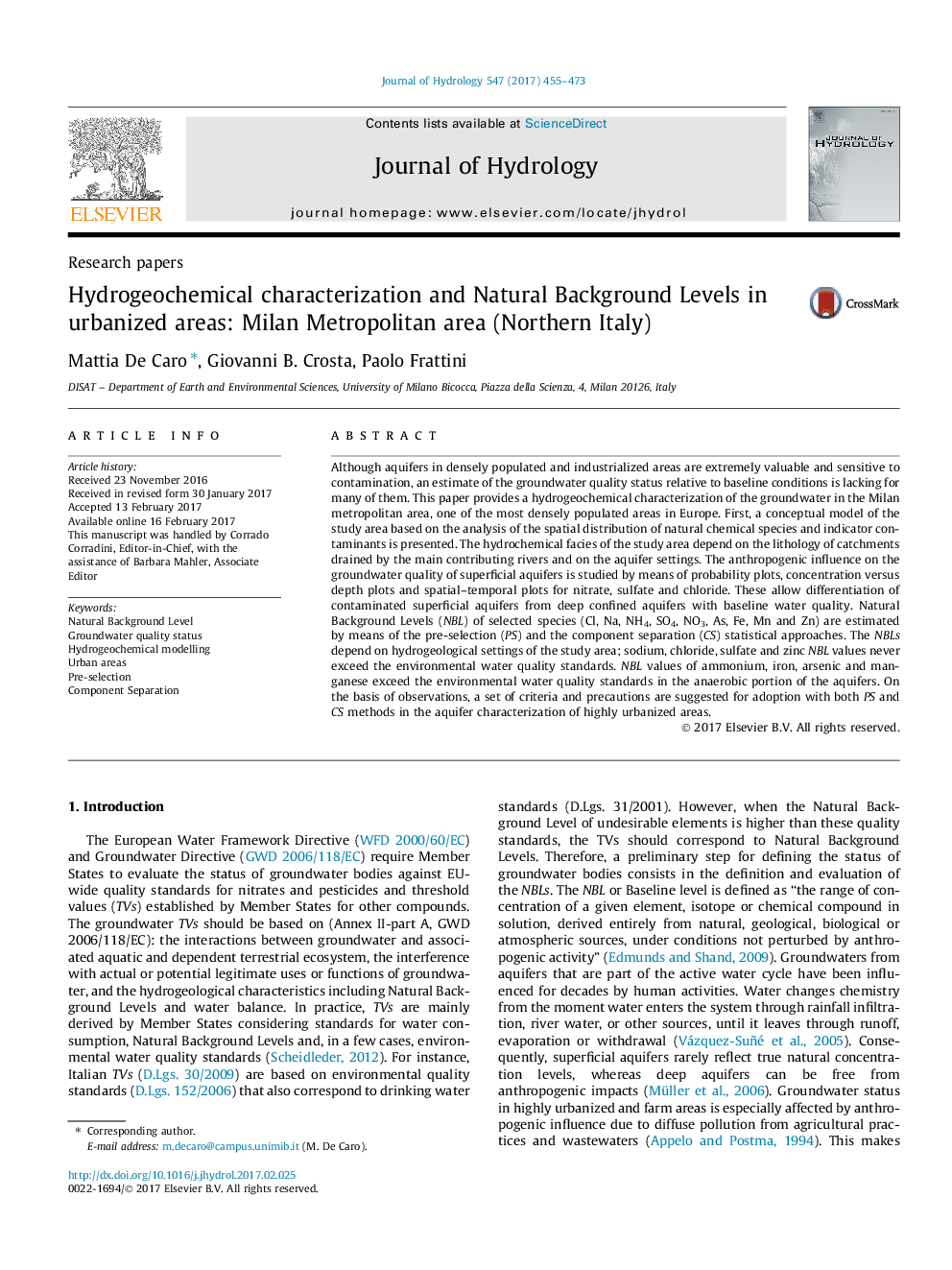| Article ID | Journal | Published Year | Pages | File Type |
|---|---|---|---|---|
| 5771059 | Journal of Hydrology | 2017 | 19 Pages |
â¢A broad hydrochemical characterisation of groundwater in a densely urbanized area is attained.â¢An assessment of Natural Background Levels is achieved through Pre-Selection and Component Separation methods.â¢Geographical and vertical zonation is required to correctly assess the NBL.â¢The Component-Separation anthropogenic peaks reveal the control of land use on the groundwater quality.
Although aquifers in densely populated and industrialized areas are extremely valuable and sensitive to contamination, an estimate of the groundwater quality status relative to baseline conditions is lacking for many of them. This paper provides a hydrogeochemical characterization of the groundwater in the Milan metropolitan area, one of the most densely populated areas in Europe. First, a conceptual model of the study area based on the analysis of the spatial distribution of natural chemical species and indicator contaminants is presented. The hydrochemical facies of the study area depend on the lithology of catchments drained by the main contributing rivers and on the aquifer settings. The anthropogenic influence on the groundwater quality of superficial aquifers is studied by means of probability plots, concentration versus depth plots and spatial-temporal plots for nitrate, sulfate and chloride. These allow differentiation of contaminated superficial aquifers from deep confined aquifers with baseline water quality. Natural Background Levels (NBL) of selected species (Cl, Na, NH4, SO4, NO3, As, Fe, Mn and Zn) are estimated by means of the pre-selection (PS) and the component separation (CS) statistical approaches. The NBLs depend on hydrogeological settings of the study area; sodium, chloride, sulfate and zinc NBL values never exceed the environmental water quality standards. NBL values of ammonium, iron, arsenic and manganese exceed the environmental water quality standards in the anaerobic portion of the aquifers. On the basis of observations, a set of criteria and precautions are suggested for adoption with both PS and CS methods in the aquifer characterization of highly urbanized areas.
